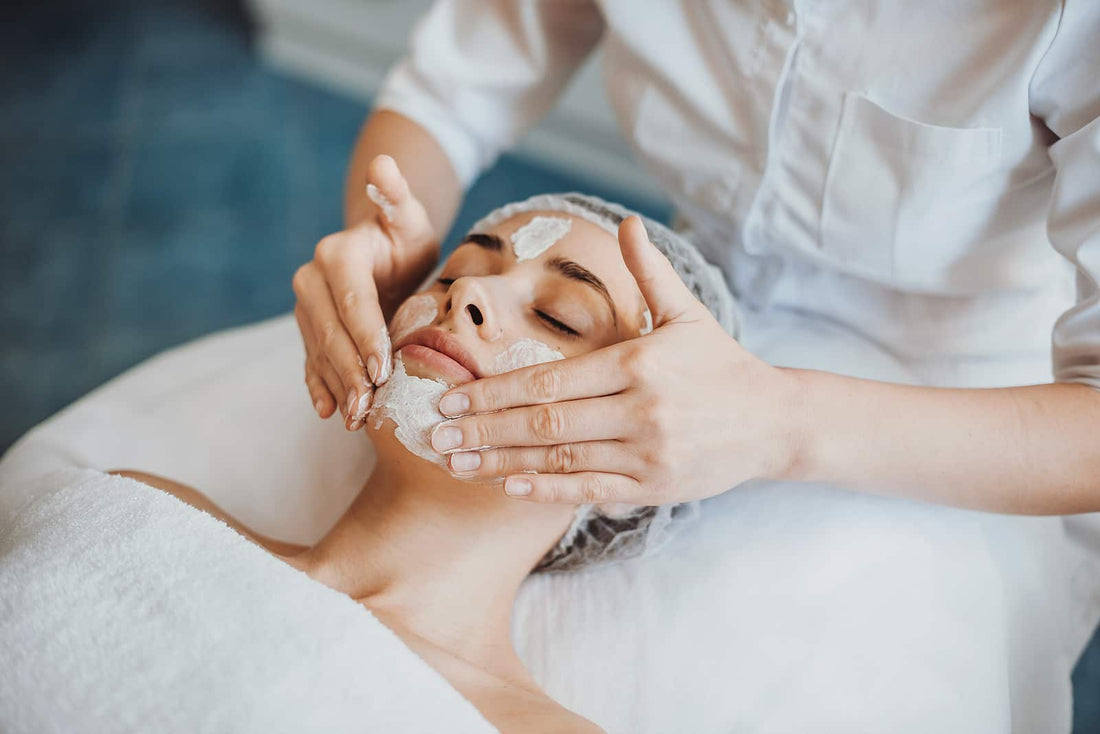Aging gracefully is an art. Between the joint pain, memory lapses, and other inconveniences, it’s easy for many of us to become chronically cranky, dull, or set in our ways.
Thankfully, it doesn’t have to be that way. You can optimize your anti-aging routine to ensure you’re giving your body the best nutrition and care possible
Part of that optimization may involve your skincare. After all, you want to look your best, right?
When it comes to taking care of your skin, your choices will likely change as you enter certain seasons of your life. For instance, you’ll probably switch out a more general face wash for something gentler, or replace a manual exfoliator with a chemical one.
The anti-aging beauty industry is growing (1), with more products entering the marketing every year. Which ones will give you a holistic, in-depth approach?
Perhaps you’ve heard of the term cellular skincare. Coined by scientists in recent years, it aims to get to the root cause of how your body functions, in order to give it what it needs to thrive.
Skincare covers a vast market, but not every product is cellular in nature. This article will hopefully give you a different perspective on anti-aging skincare, along with ingredients you can add to your current routine.
What is Cellular Skincare?
Eye cream, lip balm, foot scrubs… there are lots of beauty products that seem to pinpoint specific areas. And while this isn’t necessarily a bad thing, it’s important to consider the whole body in terms of health and wellness.
Cellular skincare refers to internal supplements and topical applications that support your skin and outward appearance on a cellular level, according to beauty and wellness strategist Mallory Huron.
So what separates some supplements from others? What dictates the dos and don’ts of cellular skincare?
Let’s dive into the two ways you can nourish your skin at a cellular level: internally and externally.
Internal Ingredients for Cellular Skincare
True beauty starts from within. And because a healthy body is a beautiful body, focusing on your health is the best first step in optimizing any routine, especially an anti-aging one.
Collagen
Every cell in your body contains different elements, including proteins. Collagen is a protein found everywhere in your body, and is helpful in making skin elastic and keeping bones healthy. It’s also part of the connective tissues that keep muscles, tendons, and ligaments together.
As you age, you begin to lose connective tissue, leading to sagging skin and wrinkles. Adding a collagen supplement to your routine has shown to be very effective in reducing the severity of these symptoms (5)
Hyaluronic Acid
Your body needs ample amounts of water in order to thrive. This is why dehydration can be so damaging, and may even speed up some signs of aging (4).
Hyaluronic acid is a substance your body naturally produces.
It helps keep your body young by lubricating joints, preserving bone strength, and speeds up wound healing. For your skin, it helps smooth out wrinkles and fine lines, making it more supple (3).
Antioxidants
Your body is hit with stress and inflammation day in and day out. Antioxidants like Vitamin C, Vitamin E, and Vitamin A help to reduce the damage done by free radical, preserving your cells (2).
Outward Ingredients for Cellular Skincare
In addition to taking quality supplements, exterior care is needed to give your skin the best possible outcome as it faces the challenges of life.
Sunscreen
The sun is a wonderful thing that brings life, but ultraviolet rays can damage your skin through a process called photoaging. This process increases blood vessels, makes dark spots more noticeable, and breaks down collagen fibers.
A study of 903 Australians showed that wearing SPF30 sunscreen every day for 4.5 years slowed down signs of skin aging by 24%, compared to those who didn’t wear sunscreen (6).
Retinol
Considered the gold standard in anti-aging skincare, retinol products are derivedfrom Vitamin A. You may also have heard of retinoids, but these aren’t quite the same thing.
Retinol speeds up cell turnover time, which helps build up your epidermis (the outer layer of your skin). A thicker epidermis helps prevent wrinkles, age spots, even acne (7).
Ceramides
An increasingly popular ingredient in skincare products, ceramides have been studies for their moisture-locking properties (8).
This can be helpful in preventing irritation and dryness, which can make fine lines and wrinkles look more pronounced.
Summary
There’s no denying we are all aging. But it doesn’t have to be a negative things, and there are things we can do to age well.
Eating a diet full of antioxidants, vitamins and minerals will help keep your body going strong. Exercising can help you maintain healthy circulation, and skincare products can make you look your best.
When it comes to optimizing your anti-aging routine, look for products and supplements that promote health on a cellular level.
Because when you target your cells, you target everything.
And that’s a true picture of health.
Do you know someone who might benefit from this information? Be sure to share with friends and family!
References
1. https://www.imarcgroup.com/anti-aging-market
2. https://www.health.harvard.edu/staying-healthy/understanding-antioxidants
3. https://www.ncbi.nlm.nih.gov/pmc/articles/PMC3970829/
4. https://pubmed.ncbi.nlm.nih.gov/22672420/
5. https://www.ncbi.nlm.nih.gov/pmc/articles/PMC6835901/
6. https://www.acpjournals.org/doi/10.7326/0003-4819-158-11-201306040-00002?articleid=1691733
8. https://pubmed.ncbi.nlm.nih.gov/18336739/
††This noted statement is based on independent research and is not necessarily the opinion of the author
